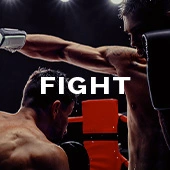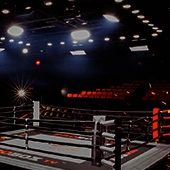by David P. Greisman
This was supposed to be the year that Canelo Alvarez and Gennady Golovkin fought each other.
This is turning out to be the year that two middleweights who should’ve fought each other instead face two British welterweights who should’ve fought each other.
Canelo knocked Amir Khan out cold in May. Golovkin may very well do the same to Kell Brook this coming September.
Canelo fought Khan instead of Golovkin because there was money to be made on pay-per-view and in ticket sales. He’ll fight Liam Smith a week after Golovkin-Brook because of the same reasons, and then will continue to push off a fight with Golovkin until late 2017, at the earliest, because of a belief that first he can make more money before facing Golovkin — and then can make even more money with Golovkin precisely because of the wait to make a fight with him.
Golovkin is fighting Brook because Canelo won’t yet fight him — and neither will other middleweights.
The fact that Golovkin is facing Brook instead of other fighters raises valid reasons to hate the fight. The fact that Brook is willing to face Golovkin when other fighters aren’t is among the valid reasons to make the fight.
Brook accepted a deal that had been offered to Chris Eubank Jr., namesake son of the former 160- and 168-pound titleholder. Eubank Jr. is a once-beaten contender whose lone loss came by split decision against Billy Joe Saunders in 2014, about a year before Saunders won a world title at middleweight.
Golovkin has a mission to unify all four major world titles in his division. He had one, added another last October, then picked up a third when Alvarez vacated it rather than defend it. Golovkin still wants Canelo — he is the lineal champ, the man who beat the man who beat the man, and he also is a pay-per-view draw. Golovkin will have to wait.
Saunders has the fourth title, but he reportedly wanted $4 million to face Golovkin, a steep cost demanded perhaps because of the steep challenge. He priced himself out. There was an offer on the table for Eubank, who left that offer on the table without that table having legs to stand on. He wanted his promoter, Eddie Hearn of Matchroom Sport, to do business in a way that he didn’t typically do business.
“We’ve taken the decision to give the fighter ownership of the show. So effectively once you pay Gennady Golovkin, all the revenue and the costs of the show are decided amongst the team, there’s a budget set, and all the profit of the show goes to the fighter, with the promoter taking a commission for effectively running the show,” Hearn told BBC Radio last week. “It’s a straightforward model. It doesn’t change for Anthony Joshua. It doesn’t change for Carl Froch. It doesn’t change for Kell Brook.
“The problem was that Chris Eubank wanted operation control of the show. He wanted to select his own ticket prices, which when I saw I nearly fainted, and I’d get strung up for. He wanted to select his own undercard, select the purses for the undercard. Talking about security and hotel. I don’t need that hassle in my life. That’s what we do. That’s what we’ve done for 30 years. They fight. We’ll make them all the money in the world. We do an unbelievable job, and they collect it at the end. That’s how it works. I’m not going to give a fighter and an ex-fighter promotional, operational control over an event. That could go horribly, horribly wrong. That’s not the way we work.”
Golovkin has fought just once so far in 2016, making quick work in April of Dominic Wade, who wouldn’t have deserved to be in the same ring as Golovkin had Golovkin’s original mandatory challenger, Tureano Johnson, not suffered an injury in training camp. The fight with Canelo was expected to come this September and seemed likely when Alvarez called Golovkin to the ring after the May knockout of Khan.
Canelo dropped his title not long after, opting out of negotiations with Golovkin’s camp. And it wasn’t until a few weeks ago that an announcement went out that Alvarez and Golovkin had agreed to fight in the fall of 2017. Except the agreement is, so far, only verbal. Golovkin’s promoter is literally taking Canelo and his team at their word.
Golovkin owes a mandatory defense to Daniel Jacobs, who has the “regular” World Boxing Association title, a secondary designation when a fighter has something the sanctioning body calls its “super” title, as Golovkin does. The WBA deferred ordering Golovkin vs. Jacobs while Golovkin vs. Canelo was still being sorted out. That fight still could come.
But in the meantime, Golovkin’s promoter, Tom Loeffler of K2 Promotions, said he hadn’t heard from Jacobs’ camp or his adviser, Al Haymon, about the fight, according to Lance Pugmire of the Los Angeles Times.
“I have a good relationship with Al. I’ve known him for a number of years,” Loeffler told reporters in April. Wade is a Haymon fighter, and a deal had been made. He believed deals could be made for Golovkin to face other Haymon fighters, including Jacobs.
But with no Saunders, no Eubank and no Jacobs, there’s little remaining at 160 that would be both notable and available for Golovkin’s television date in September.
There are several fighters at 154 who would make interesting opponents, though it’s not certain whether any of them would’ve been able or willing to face Golovkin this September under terms agreeable to both teams. One of them, Demetrius Andrade has said he’s willing to face Golovkin farther into the future when he’s accomplished more himself and the fight is bigger. Another, Erislandy Lara has repeatedly called out Golovkin.
Golovkin-Lara would be an interesting fight if it could be made. But as with Canelo vs. Khan, there’s more money that can be made from a sideshow between a 160-pounder and a 147-pounder than from a more competitive fight between a middleweight and the available opponents at or closer to his size.
The frustration over getting other top middleweights in the ring with Golovkin isn’t new. For some time, there’s been talk that Golovkin should go up to 168 in lieu of having a big fight at 160. It’s unfair to ask a fighter to disadvantage himself before he’s ready, all for no fault of his own, but it’s something that often should be done when it’s the best move out there. That’s what makes Brook’s move so courageous, or stupid, or both. He’s going up two divisions in two months. (A bout between Golovkin and 168-pound titleholder may happen in early 2017.)
That short turnaround between now and September is the other reason why Golovkin’s team is making this fight. They already had the date. They wanted to fight in the United Kingdom, to build what they hope is an increasingly global fan base. They wanted to keep their fighter active, then bring him back later for something better.
“We have a Sept. 10 date. Any promoter you talk to always tries to book a fight three months to four months before the date so they can publicize it, so they can promote it and everybody can make the money they expect to make,” said Golovkin’s trainer, Abel Sanchez, in an interview with Rick Reeno of BoxingScene.com last week. “We are nine weeks away from the fight. The Chris Eubank negotiations just took up a month, a month for this fight to possibly happen … We don’t have the time to have any meaningful negotiations with somebody else. The fight is on the 10th of September, and [we didn’t know] when would be the next available date from HBO.”
And yet this fight deserves criticism because it is being made primarily for business reasons, because it is not what we wanted, nor is it expected to give us an acceptable substitution for what we desired. Golovkin has blown away decent and good middleweights. Now he’s facing a welterweight. Brook may fight bravely. But unless he boxes perfectly, he will go down brutally.
Canelo was essentially a junior middleweight when he fought Khan, a 155-pounder who added a significant amount of weight by fight night. Khan was one division below, a welterweight who hadn’t distinguished himself yet in that weight class and whose chin hadn’t held up to the strongest of punchers before.
Golovkin is a 160-pounder. Golovkin’s team is trying to argue that “GGG” won’t gain too much weight by fight night. They say that Brook, who is sturdier than Khan despite his own struggles with Carson Jones in 2012, will be closer in height and size to Golovkin than people expect. Brook is a very good 147-pounder, even if his only significant win in that division was the decision over Shawn Porter two years ago.
Brook wanted a fight with Khan in recent years. He was in negotiations to have a unification bout later this summer with Jessie Vargas. That fight fell apart when Brexit lead to the value of the British pound dropping, which meant that Brook’s promoter wanted to pay Vargas’ side less money, according to Dan Rafael of ESPN.com. Brook owes a fight to the winner of an upcoming fight between Errol Spence and Leonard Bundu.
He’s may return to that route, but first he’s taking a different path, one that’s been blazed before. It’s not unheard of for a welterweight to challenge a middleweight.
“The two divisions, before and after the birth of junior middleweight, have intermingled almost as long as they’ve existed,” Cliff Rold of BoxingScene.com wrote the other day. “Almost all the top middleweights faced welterweights in their careers, for titles and not. Brook is rated by many as the leading welterweight in the world right now. Someone in that position challenging the man viewed as the leading middleweight isn’t historically unusual. That doesn’t make Golovkin-Brook enticing.
“Brook is a good fighter but also one with a limited set of tests in his own division. He has a really good win over Shawn Porter. In terms of the upper echelon of his class, that’s about it … This isn’t Emile Griffith rising to challenge Dick Tiger. It’s not even Jose Napoles fatefully electing to try Carlos Monzon or Marlon Starling-Michael Nunn. On paper, it’s a dice roll for a guy who might be the goods but who hasn’t faced anyone since Porter to test the proposition.”
We can’t blame Brook for wanting the fight, for wanting to take on a big challenge for potentially huge rewards even when there are good bouts to make in his own division.
We can understand Golovkin taking on Brook when the good bouts in his own division can’t be made and other competitive fights may not be able to be made on such short notice.
We still don’t have to like it. Golovkin-Brook isn’t on pay-per-view in the United States as Canelo-Khan was, but it will be in the United Kingdom. Even for American audiences, their HBO subscription money will be going toward yet another mismatch on paper.
There were valid reasons to make the fight. There are valid reasons to hate it, too. It is yet another example in boxing of a time in which we have expected better, only to be told otherwise and sold worse.
“Fighting Words” appears every Monday on BoxingScene.com. Pick up a copy of David’s book, “Fighting Words: The Heart and Heartbreak of Boxing,” at http://bit.ly/fightingwordsamazon or internationally at http://bit.ly/fightingwordsworldwide. Send questions/comments via email at fightingwords1@gmail.com



